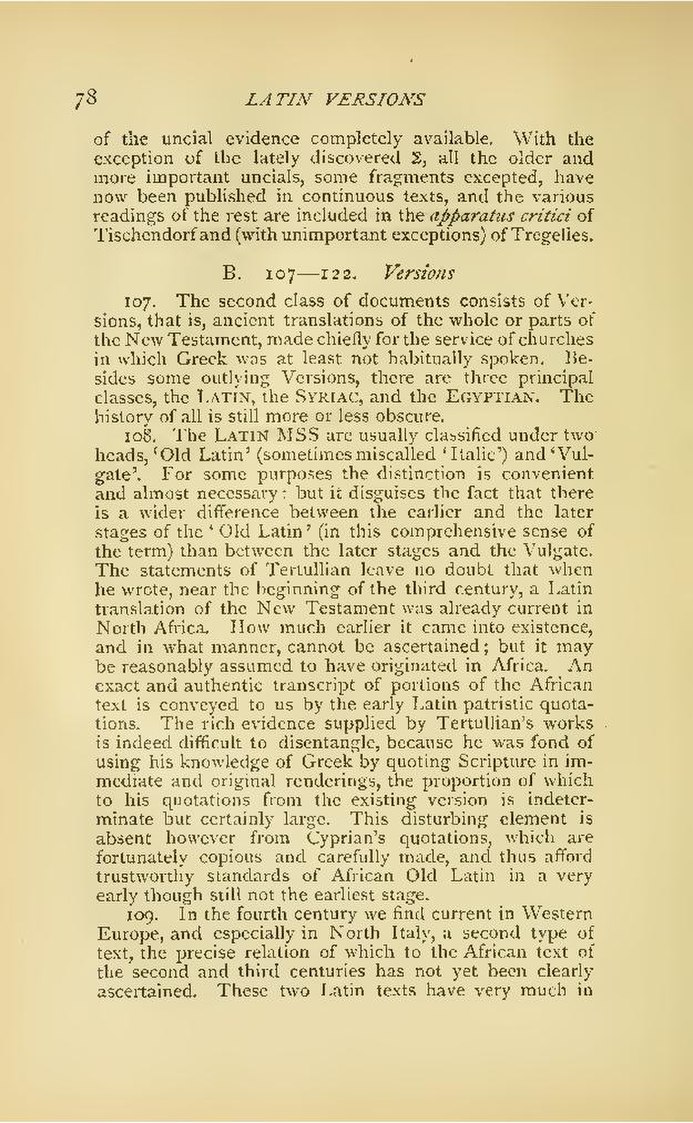of the uncial evidence completely available. With the exception of the lately discovered Σ, all the older and more important uncials, some fragments excepted, have now been published in continuous texts, and the various readings of the rest are included in the apparatus critici of Tischendorf and (with unimportant exceptions) of Tregelles.
B. 107—122. Versions
107. The second class of documents consists of Versions, that is, ancient translations of the whole or parts of the New Testament, made chiefly for the service of churches in which Greek was at least not habitually spoken. Besides some outlying Versions, there are three principal classes, the LATIN, the SYRIAC, and the EGYPTIAN. The history of all is still more or less obscure.
108. The LATIN MSS are usually classified under two heads, 'Old Latin' (sometimes miscalled 'Italic') and 'Vulgate'. For some purposes the distinction is convenient and almost necessary: but it disguises the fact that there is a wider difference between the earlier and the later stages of the 'Old Latin' (in this comprehensive sense of the term) than between the later stages and the Vulgate. The statements of Tertullian leave no doubt that when he wrote, near the beginning of the third century, a Latin translation of the New Testament was already current in North Africa. How much earlier it came into existence, and in what manner, cannot be ascertained; but it may be reasonably assumed to have originated in Africa. An exact and authentic transcript of portions of the African text is conveyed to us by the early Latin patristic quotations. The rich evidence supplied by Tertullian's works is indeed difficult to disentangle, because he was fond of using his knowledge of Greek by quoting Scripture in immediate and original renderings, the proportion of which to his quotations from the existing version is indeterminate but certainly large. This disturbing element is absent however from Cyprian's quotations, which are fortunately copious and carefully made, and thus afford trustworthy standards of African Old Latin in a very early though still not the earliest stage.
109. In the fourth century we find current in Western Europe, and especially in North Italy, a second type of text, the precise relation of which to the African text of the second and third centuries has not yet been clearly ascertained. These two Latin texts have very much in